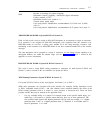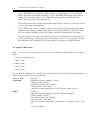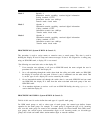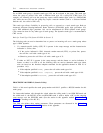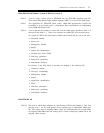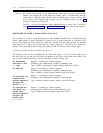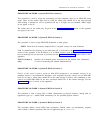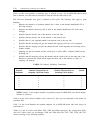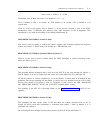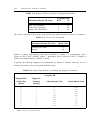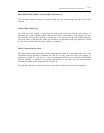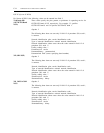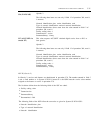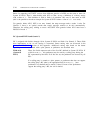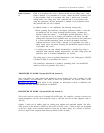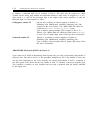
ADMINISTRATIVE PROCEDURE SUMMARY
C-11
(timer value) = (N200 + 1) * T200
The default value of these four timers is 4 seconds [(3 + 1) * 1].
T321 is defined as T203 + 10 seconds. As T203 defaults to 30 seconds, T321 is defined as a 40
second timer.
Field 13 of this word applies only to Generic 2. If the physical location is part of an NFAS
arrangement, field 13 identifies this interface from other interfaces in the arrangement. This
information is also used in the coding of the channel identification IE.
PROCEDURE 262 WORD 3 (Generic 2 Only)
This word is used to enable or disable the codeset mapping and D-channel hyperactivity detection
features for Generic 2. These features are defined on a PRI interface basis.
PROCEDURE 275 WORD 4 (System 85 R2V4 & Generic 2)
Field 14 of this word is used to enable ISDN. No ISDN messaging or feature processing occurs
unless this field is set to a 1.
PROCEDURE 279 WORD 1 (Generic 2 Only)
This procedure defines information that is sent out in the NSF IE of the setup message for Generic 2.
This IE requests a service or feature from the remote end of the ISDN link for a particular call.
All known features or services requested by or of the Generic 2 switch must be translated in this
procedure. The correct encodings for the feature or service are to be obtained from the AT&T ISDN
Primary Rate Interface Specification, Issue 2.1. Examples of such services are SDN, MEGACOM
800, MEGACOM, INWATS, WATS, and ACCUNET switched digital service.
The encoding of the NSF IE is discussed further in the Procedure 309 Word 5 section of this
appendix.
PROCEDURE 280 WORD 1 (Generic 2 Only)
This procedure can alter opcode values of EIs and affect the codeset associated with an IE. In
System 85 R2V4 user-to-user information is associated with codeset 7 while in Generic 2 it is
associated with codeset 6.
The following IEs have changed opcode values between System 85 R2V4 and Generic 2:



